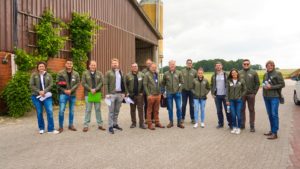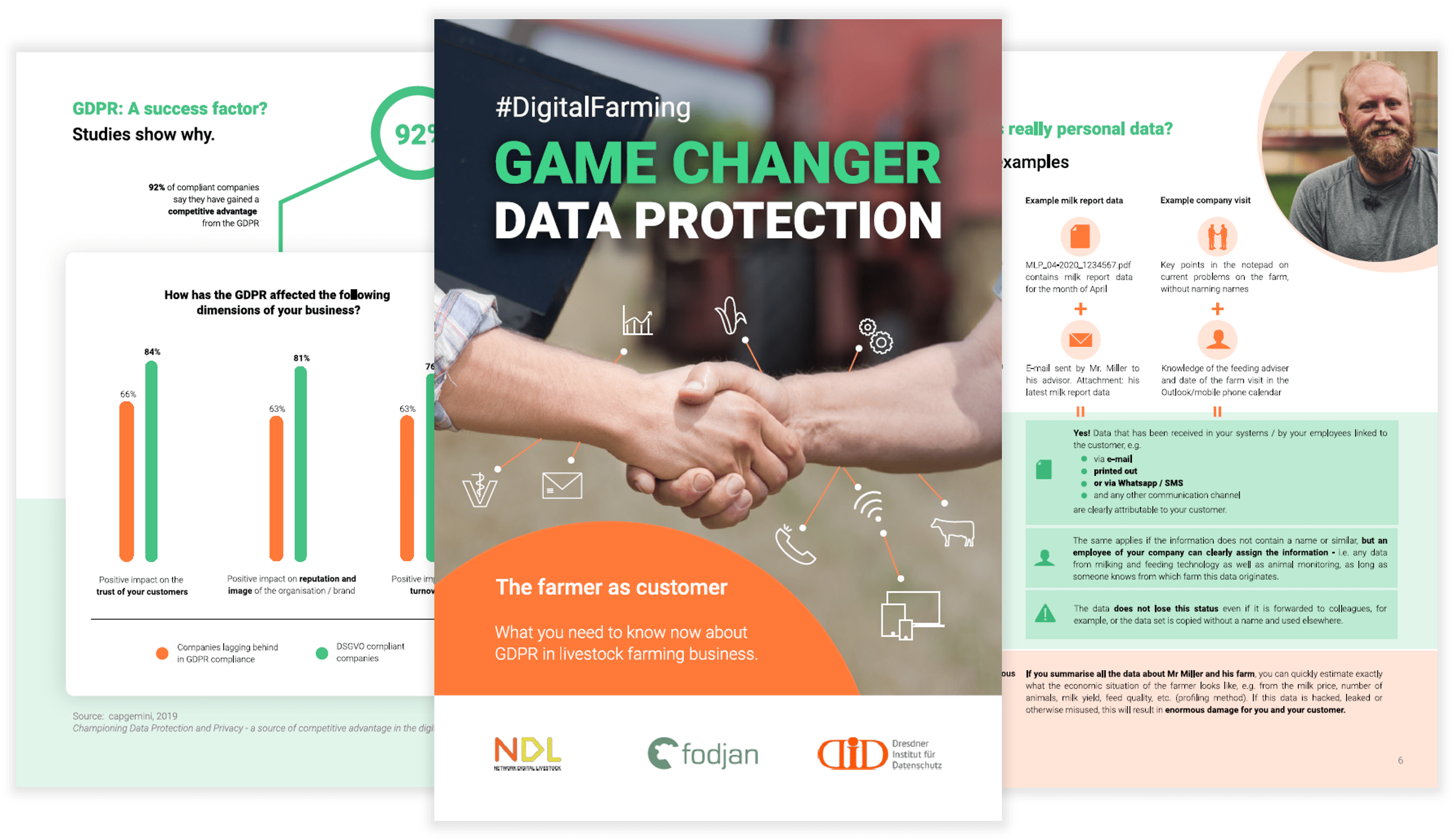
What NDL will do in 2023? Let’s have a look
GDPR compliance can be a hidden champion strategy for you. This is why In our new free NDL whitepaper we discuss and clarify …
While the opportunities and potential of digital solutions promise an exciting, more efficient, and more economically profitable future, this is also countered by the expenses that the introduction of digital solutions entails. “What the farmer doesn’t know that…” doesn’t he introduce on his farm? – Far from it, because according to a Bitkom survey from November 2016, a large proportion of farmers are basically positive about digitalization. 66% of farmers said they saw an opportunity in digitization. 19% felt that it had no influence and only 13% ostensibly saw a risk.
But let’s take a closer look at the concerns surrounding digitization in agriculture:
From the point of view of farmers, the biggest obstacle in the Bitkom survey is the high investment costs. It is mainly on large farms that such high investments are seen as economical. For smaller farms, some digital investments are possible, but the payback time is significantly longer. The resulting competitive disadvantage of smaller companies also promotes structural change – small companies disappear and large companies grow larger. Concerns about investment costs thus quickly turn into existential fears. The German Federal Ministry of Food and Agriculture (BMEL) has also recognized this and therefore wants to remove the obstacles for small to medium-sized farms with a program for the future (More here). For agricultural machinery, it is also possible for smaller farms to enter into new technologies via machinery rings and contractors without having to invest completely themselves.
A well-founded concern continues to revolve around technical malfunctions and data protection. The failure of a milking or feeding robot or a defective harvesting machine, for example, can significantly hinder the production process and cause serious damage. Appropriate safety measures on the part of manufacturers are essential here. But farmers also have a role to play – for example, regular data backups and up-to-date software, especially in the area of virus programs, can help. In addition, data security should also be subject to appropriate laws so that data sovereignty always lies with the farmer. The General Data Protection Regulation (GDPR) is a first step in this direction, because the focus here is on the protection of personal data.
To shed more light on this topic we wrote a whitepaper about GDPR compliance in the work with the farmer as customer and proudly present it as free downloadable content for you here:

The biggest problem currently facing agricultural digitization is the patchy expansion of the network. Rural regions in particular lack consistent, high-performance data transmission. However, Internet-based and networked solutions build on this. Data transmission is essential, especially if a uniform database is to be used flexibly between different people, at different locations and with different devices. Thus, it is not only farmers who are critical of digitization in this respect, but also the digitizers.
To find the best solutions for individual improvements, farmers are currently forced to buy from different manufacturers. This is also because the digital landscape in the agricultural sector currently consists of many individual stand-alone solutions. Although these are making efforts to create interfaces and to network with each other, there is still a lack of communication between the various systems. Complete providers already exist, but some of these systems are not compatible with others, should a decision be made in favor of a different additional provider. This makes investment decisions on the farms much more difficult. This also increases the fear of becoming too dependent on one manufacturer.
80% of respondents in the Bitkom survey agreed with the statement that digitalization will make agricultural production “transparent” in all its facets. By means of new technologies, production can be tracked along the entire value chain all the way to the consumer – while this promotes consumer understanding and their commitment to more sustainable agriculture, at the same time it also puts farmers in particular much more in the focus of public interest, scrutinizing them in their work and doing so more than many other professional groups. Feelings of unlawful paternalism, new regulations and laws that are far removed from reality, and other concerns are spreading. So here, too, exchange is important in order to be able to assess the consequences of this stronger networking and to help shape it. Many farmers are already setting a good example here, getting involved in campaigns to strengthen communication between farmers, share opinions and let consumers look behind the scenes.
As many benefits as digitization brings to agriculture, it also requires a major shift in thinking. The workplace of farmers is changing. According to the German Federal Ministry of Food, Agriculture and Consumer Protection (BMEL), office working hours will increase by around 20%, while work for livestock farmers in the barn will decrease by around 35%. According to scientists, 42% of currently existing jobs will be digitized in the next 20 years. Traditional knowledge and experience will be partially replaced by algorithms. This change also makes cooperation between generations more difficult in some cases and harbors potential for conflict.
However, it also results in new fields of employment and, in the best case, better working conditions. But: It’s up to the farmer – further education and training are becoming increasingly important and prepare for the coming challenges of digitized agriculture. There is a lot to be done to master this future, and manufacturers as well as politicians, consumers and, of course, farmers are called upon to actively meet challenges and solve them together.

What NDL will do in 2023? Let’s have a look
GDPR compliance can be a hidden champion strategy for you. This is why In our new free NDL whitepaper we discuss and clarify …

Rumination: How quickly and accurately do sensor technologies detect diseases?
Is purely visual detection of disease and discomfort the better and more reliable way? Or are digital systems the way of the future?

Save your seat: NDL Meet Up & new digital Pitches coming up in Q4|2023
NDL Meet Up Conference 29’/30′ Nov. | Online Pitches with Agolin & Arla in Oct. & Dec.
Copyright © 2023 NDL. All rights reserved. | Privacy Policy | Imprint | Cookies